If all you want to do is occasionally go fishing, a rod, reel, line, and lures will get you by. As it transitions from an occasional outing to a regular hobby or a passion, you will need to add some gear to your arsenal.
Here, you will learn about some important fishing gear that goes beyond the basics, learn how to care for and carry it all with you, and learn why it’s important to have.
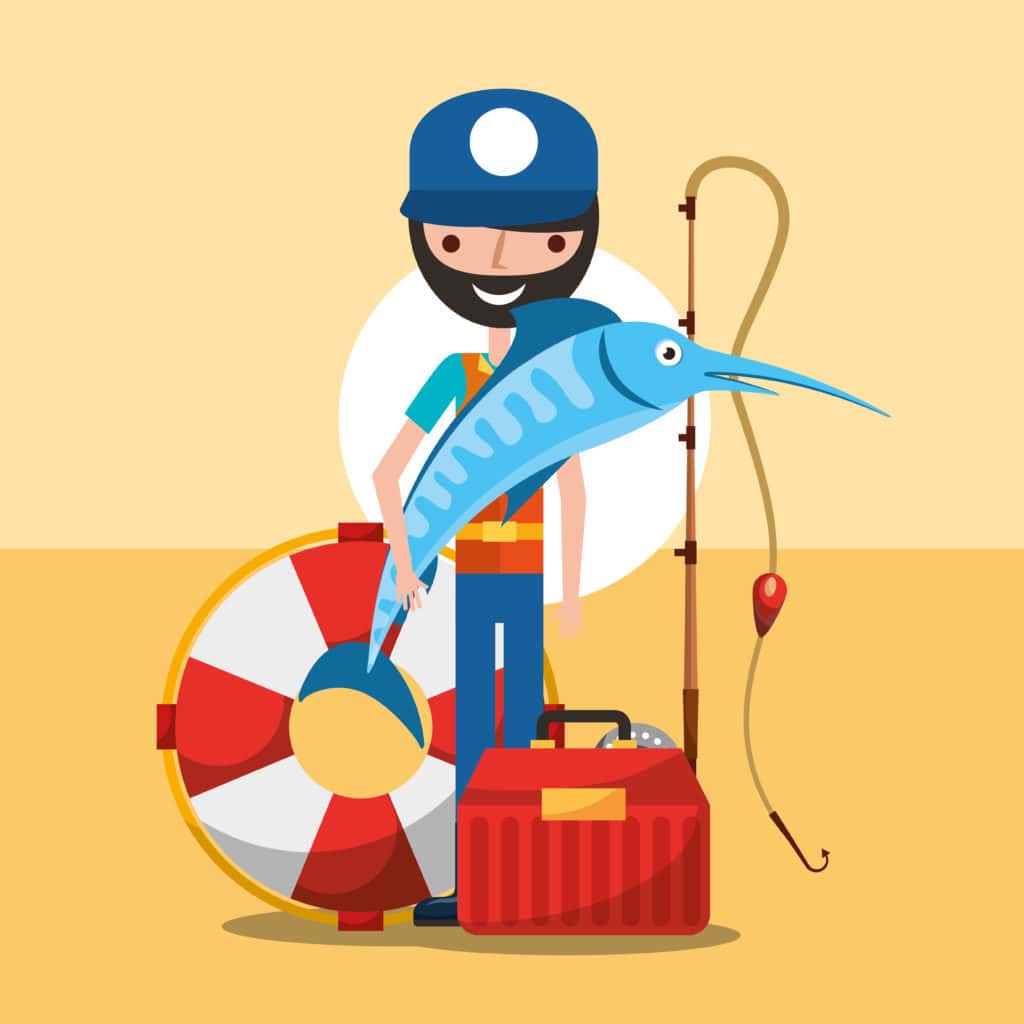
If you already know which topic interests you, use our table of contents to get there faster. Otherwise, sit back and enjoy the trip.
Fishing Gear
Beyond the basics, here are some other fishing supplies you’ll likely want to bring along. These will increase your fishing success, as well as increase your comfort, safety, and stamina when out on the water.
Must-Have Supplies
If you want to revisit the most basic fishing gear, check out our general fishing 101 article. Here are some other accessories you should also bring along.
Needle Nose Pliers
Pliers are a tool with many uses in fishing. They can be used to bend hooks, remove hooks from fish, cut, bend, and protect your hands and fingers from potentially damaging materials.
Line Cutter
A line cutter is nice but not strictly mandatory. If you have a good pair of pliers, they may suffice for cutting your line, although having a dedicated line cutter ensures it is always sharp and ready to go. These are also typically small and can be attached to a keyring, belt loop, or tackle box to keep them accessible. A good line cutter is easy to maneuver when cutting line for flies and is specifically adapted to handle various types of line, including braided line.
Sunglasses
If you can’t see your line or the fish below the surface, you may miss out on hot fishing spots. Constant exposure to the sun can also damage your eyes. Getting a great pair of polarized sunglasses for fishing will let you see what you’re doing while protecting your eyes from sun exposure.
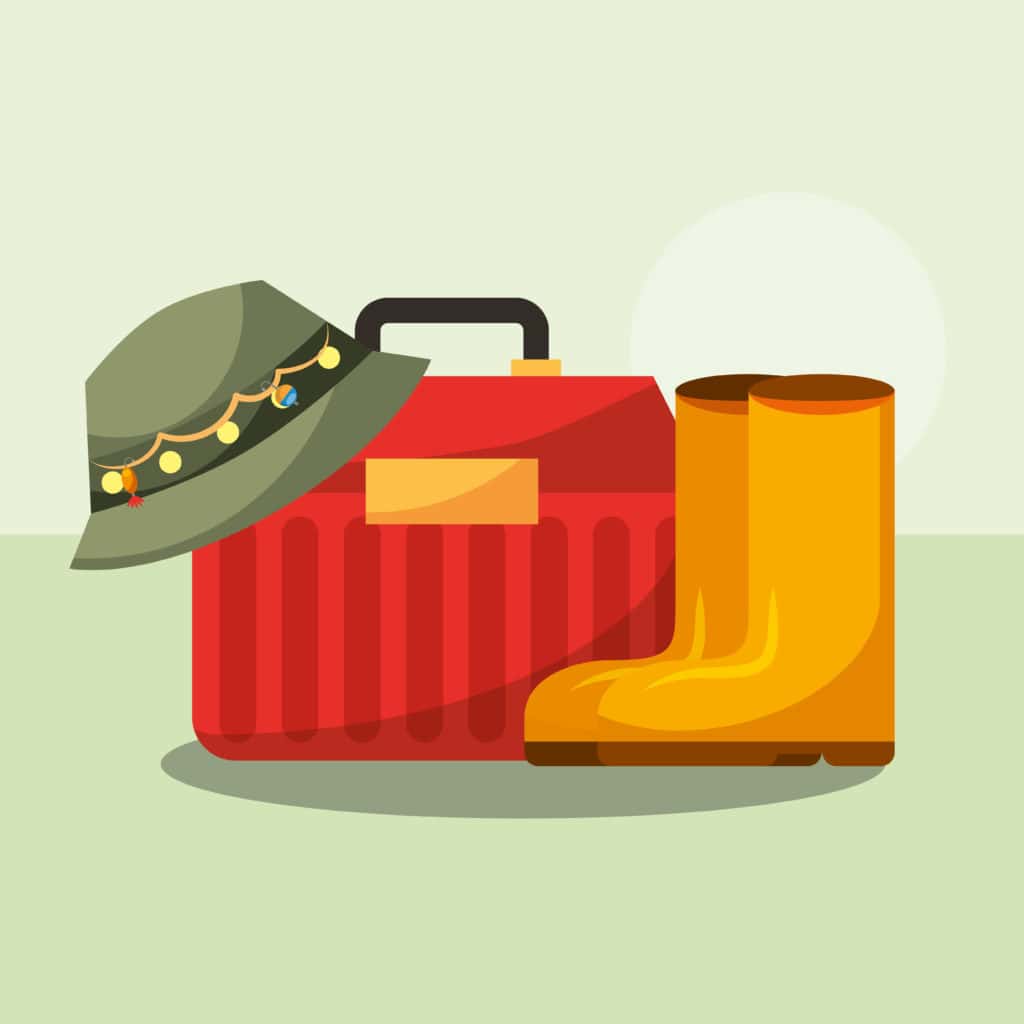
Hat
A fishing hat is another way to protect your head and your eyes. Having the sun beating down on your head, face, and shoulders can cause serious burns after a full day out on the water and can even increase your chances of skin cancer. Putting a wide-brimmed hat on your head is an easy way to increase safety and comfort.
First Aid Kit
This should go without saying. You are working with sharp hooks and tools in areas where injury is always a possibility. Having a suitable first aid kit will keep you safe and ready for minor injuries that can occur. It’s always better to be safe than sorry.
Scale or a Fishing Ruler
If you want to measure those catches to mark your progress or brag to your fishing buddies, you should have a fishing scale or ruler to use as proof. Some areas also have size restrictions you will have to adhere to. If a fish is over or under the size guidelines, you’ll have to release it. Having one of these tools allows you to remain in compliance.
Fish Finder
Wanna catch the big ones? Or maybe you’re just looking for areas with the highest concentration of fish? Either way, a fish finder uses sonar and extensive maps to tell you where the fish are. Some even use GPS to help you determine exactly where you are in location to great fishing spots.
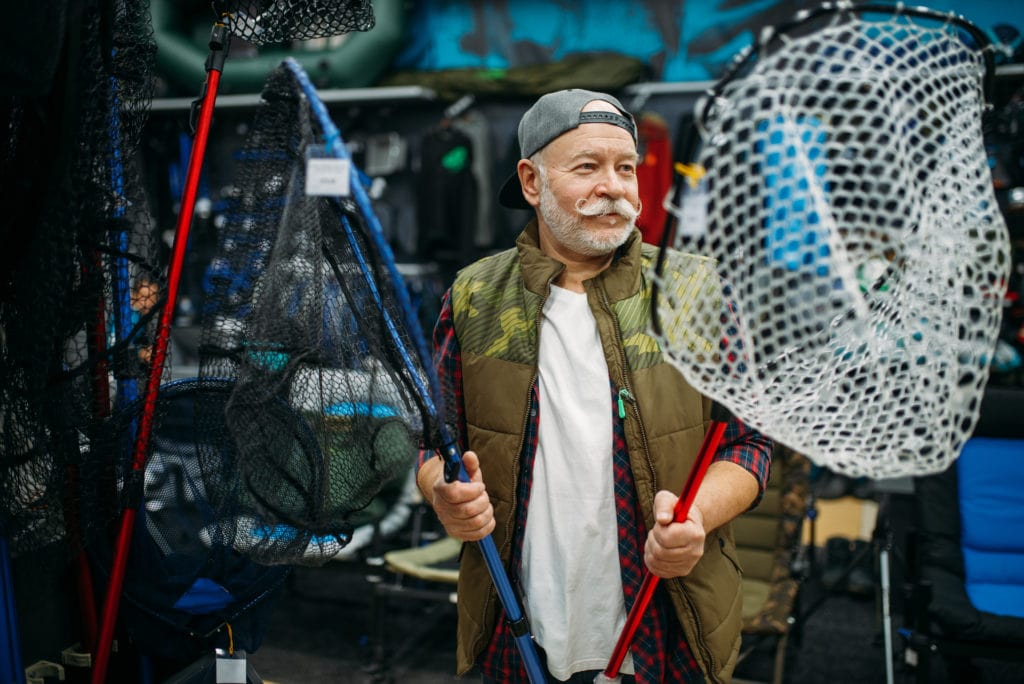
Fishing net
It may not be at the top of the list but having a quality fishing net to scoop up your catch as you drag it in is enormously helpful and prevents it from literally slipping through your fingers. When fishing on open water, it is a necessity to keep your prize catch from getting loose on its way into the boat.
Cooler
So, once you catch a few, what do you do with them? Of course, no one wants to have dry, leathery fish from sitting outside in the sun for too long. Nor do most people want to just toss the fish into their vehicle to head back to the campsite or home. Having a fishing cooler keeps the fish safely contained until you are ready to cook them.
Waders
Above your boots, you should have a good pair of fishing waders. These will allow you to step into the water without worrying about soaking yourself from head to toe when retrieving wayward gear or when bringing in the “big one”.
Vest
Fishing vests aren’t the most fashionable accessory but man, can they come in handy. Having everything you need attached to your chest means nothing is out of reach when you need it. These can hold an unbelievable amount of fishing supplies within arm’s reach at all times.
Cart
If you haven’t had the realization yet, your hands are going to be full. You can either make a bunch of trips back and forth to carry your fishing supplies, bring along some fishing caddies (your kids, grandkids, nieces/nephews, or even the neighbor’s kids) to carry it all, or you can get a fishing cart to bring it all out at once. It’s up to you.
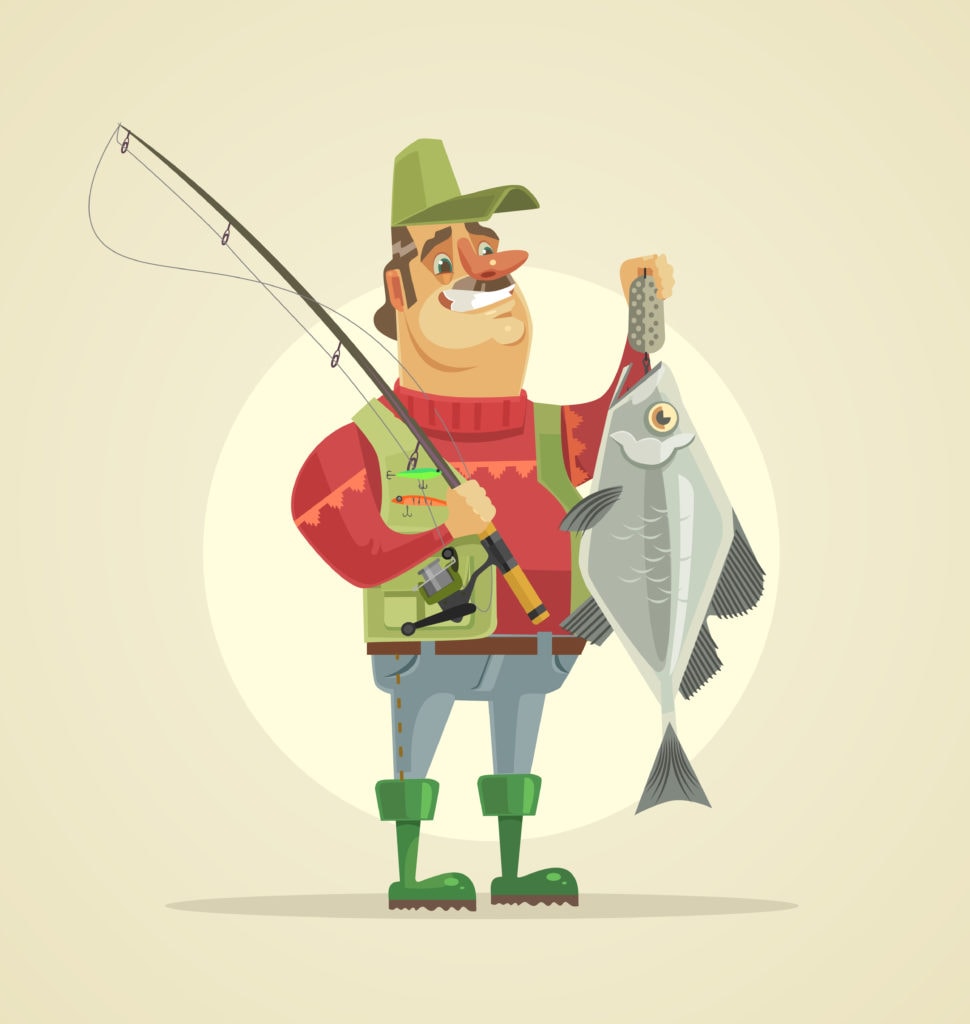
Boots
The truth is, you’re gonna get wet when fishing. Whether you’re out on the water or fishing from shore, there’s bound to be a need to approach the water. To keep your feet dry and maintain traction, you should have a good pair of fishing boots.
Gloves
Some water is downright freezing, even in the summer. Reaching into cold water can numb your fingers and reduce your dexterity. You’re also trying to hold onto wet, often slippery items. Fishing gloves will protect your hands and often add textured grips to help you keep things from slipping and sliding around.
Camera/GoPro
We’ve all heard of the “one that got away”. By bringing a waterproof fishing camera or using a GoPro, you can ensure you at least have a picture to show for it. And if you take pictures next to a ruler or on the scale, it provides irrefutable proof. After all, if there’s no pic, it didn’t happen.
Each item you add to your fishing gear setup is another leg up when you get out there. Having the proper equipment will ensure you are prepared for whatever comes your way.
Read Before Buying
When choosing each piece of gear, be sure to consider a few things.
Where Will I Be Fishing?
Knowing what waters you will be fishing in will be key to obtaining the right equipment. If you are ice fishing, you’ll need tools that can handle the icy temperatures. If you are fishing in saltwater, be sure to get corrosion and rust resistant gear.
Additionally, the current in large bodies of water can quickly weaken and possibly damage some of your equipment. So be sure you know where you plan to fish before shelling out a bunch of money.
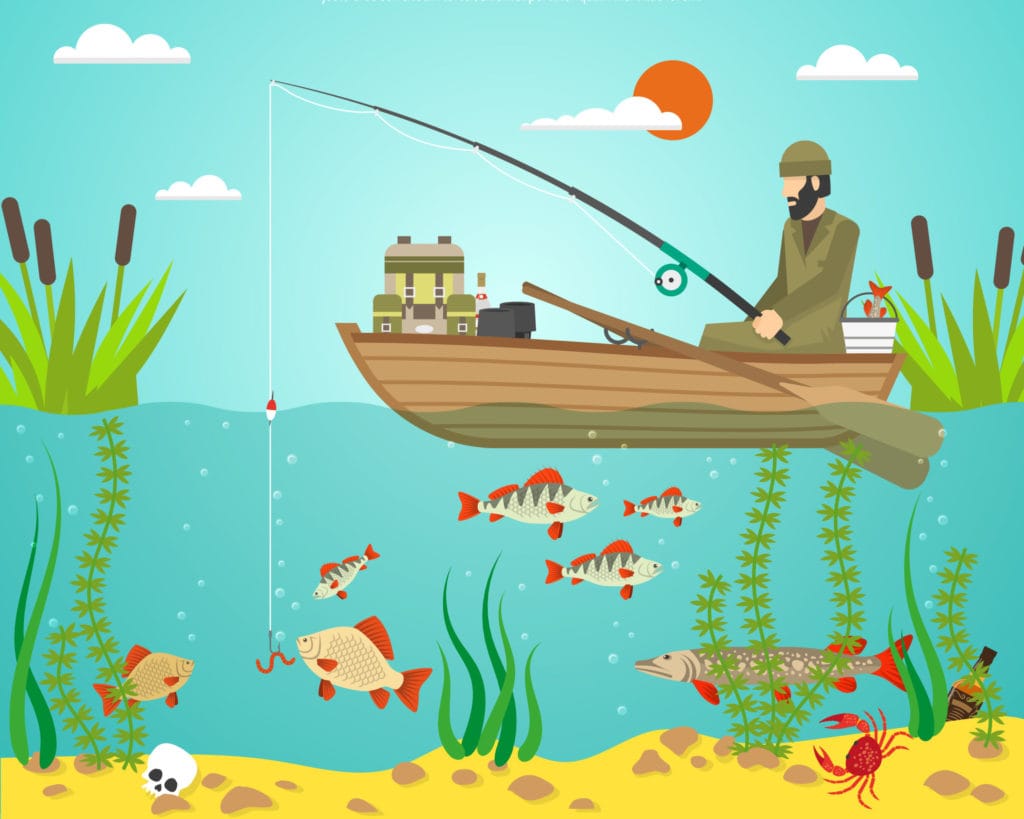
What Type of Fish Am I Targeting?
This is similar to the above question. If you are fishing for smaller species in calm waters, you can use nearly any equipment. But if you are in a rushing river or ocean, looking for larger species, you’ll need more durable tools capable of drawing in and hooking the bigger game.
Don’t lose your prize catch because your line or pole was too weak to hold onto it.
How to Get Your Fishing Gear Ready
Now that you have it all, how do you get everything ready? If you have a bunch of gear, your best bet is to prepare before you get to your fishing spot. Preparing at home gives you plenty of room to work and you are less likely to lose all the small pieces or get tangled up in a tree or bush while assembling.
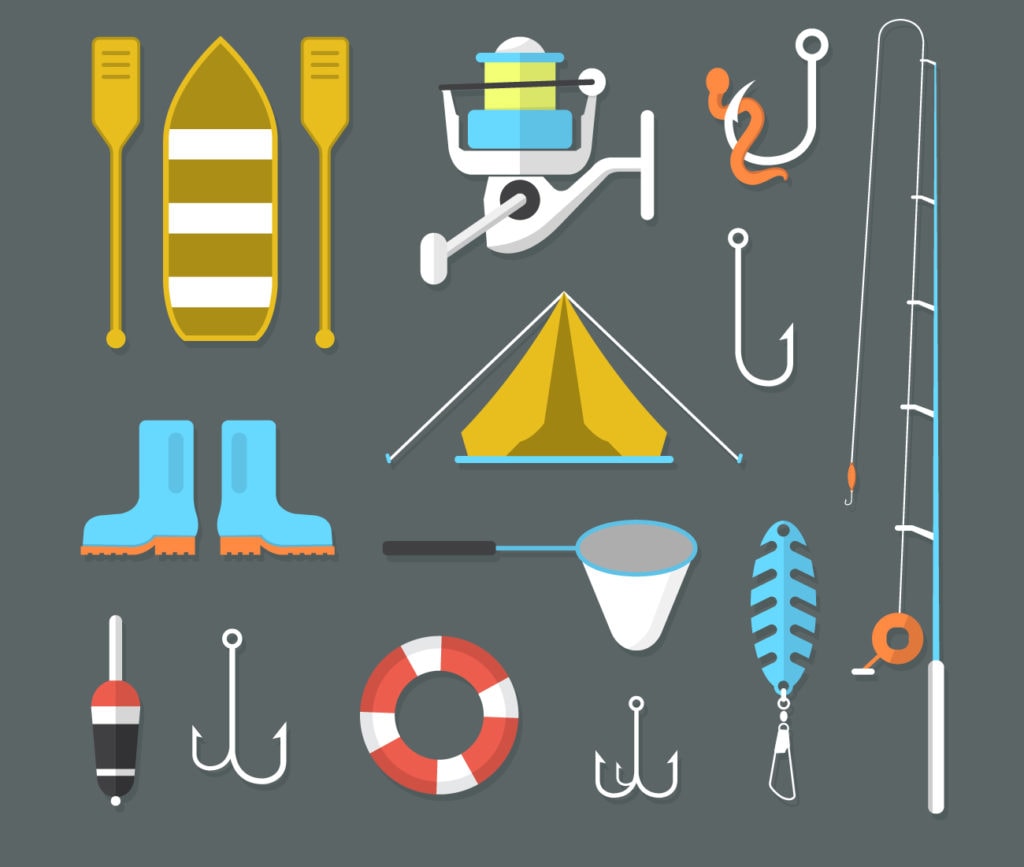
Prepare Your Rod and Reel
As the most important piece of gear, you need to make sure your rod and reel are in tip-top shape before heading out to the water.
● Remove any old hooks and line from your setup. Clean and lubricate the reel according to manufacturer instructions.
● Fill spools with fresh line, if needed. If your old line is still in great shape, be sure it has no knots or tangles and is properly spooled.
● Clean your fishing rod handles and wipe down the entire rod.
● Examine the rod and reel for any damage, including cracks that could snap the rod while reeling in a catch.
Organize Your Tackle and Tacklebox
● Start by cleaning your tackle box or bag thoroughly. Make sure lures and tackle items are in their proper compartments.
● Cut off leftover line or knots from the previous season.
● Sharpen hooks and replace any rusty hooks with fresh ones.
● Restock your lures, bobbers, and sinkers as necessary.
● Make a list of any supplies you need to replenish or new supplies you wish to purchase.
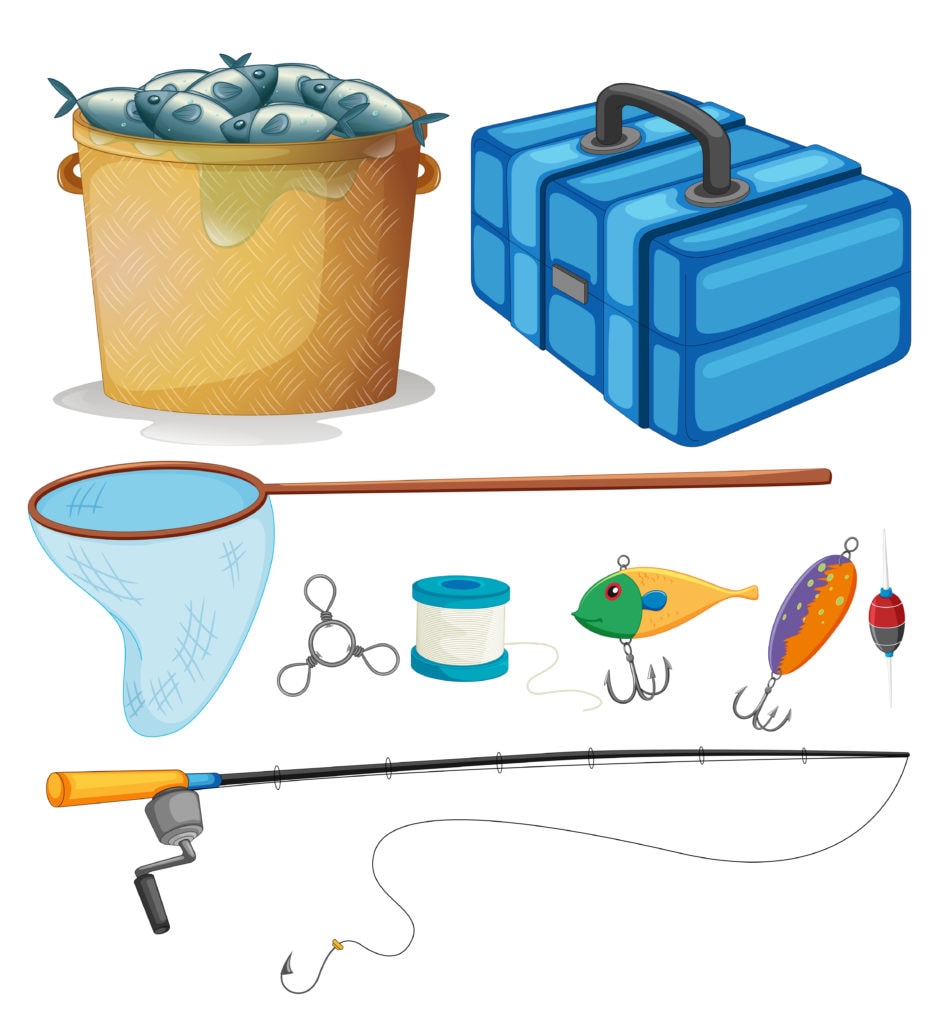
Get Everything Else Ready
Every piece of your equipment should be ready to go. This includes a complete wipe down of all items. This should be done at the beginning and end of every fishing season.
Be sure your tools are clean and lubricated. This includes pliers, scissors, scales, and rulers.
Inspect and clean waders, boots, vests, and other equipment. This is for your safety and comfort but also ensures you don’t introduce invasive plant life to new bodies of water.
Note: Don’t forget to renew your fishing license. It would be a drag to spend a day out catching the best game ever, only to have a game warden come by and tell you to put it all back because you don’t have a license.
How to Clean Fishing Gear
If you are wondering how to clean all your fishing equipment properly, you’re not the only one. Here is a quick guide to cleaning all your valuable gear.
Gather Supplies – You will need:
● Gentle dish soap
● Lots of rags
● A soft bristle brush and/or toothbrush
● Reel cleaning kit and lubricant
The Rod
1. Remove the reel, line and any other attachments
2. Wipe down the entire length of the rod with a rag and bucket of dish soap and water
3. Use the soft brush to loosen any caked on or stubborn dirt attached to the rod or guides
4. Be sure to clean the reel seat and surrounding areas very well- this will ensure your reel sits securely and properly
5. Rinse well and dry

The Reel
1. Cleaning the reel can be tricky- there are many parts to deal with
2. First clean all exterior parts with gentle soap and water
3. Follow manufacturer’s instructions for disassembly and cleaning the interior components
4. Lubricate all recommended pieces
5. Reassemble carefully
Lures, Hooks, Pliers, and Other Bits and Pieces
These parts are often the dirtiest as they are inside a fish’s mouth, dragged through mud and all manners of plant life. Rusty, dirty lures will quickly lose their appeal to fish.
Use dish soap and water to clean off any dirt or build up. Use a toothbrush or small soft brush to loosen any stuck on messes. Be sure to store wet lures separately when fishing so you don’t contaminate everything in your tackle box.
Cleaning your gear makes it last longer and remain effective year after year. It’s certainly worth a bit of time and elbow grease to keep everything in good condition.
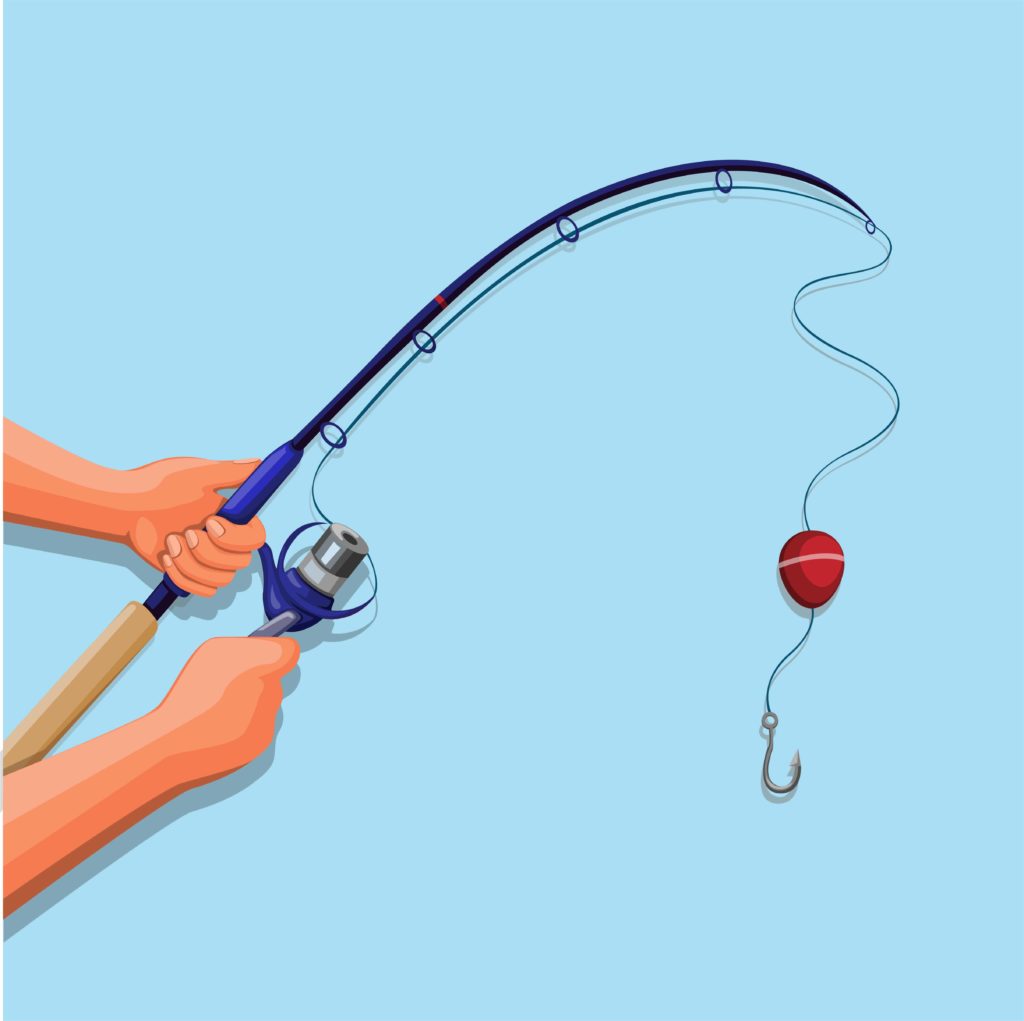
How Often Should I Clean My Fishing Gear?
Fishing gear should be wiped down after every fishing trip. Allowing saltwater, mud, or plants to remain on your equipment can cause rust and buildup which will make your gear wear out faster.
You should also do a thorough clean at the end of every season before you store your equipment and again before your first trip of the season to ensure no dust or missed areas interfere with your fishing experience.
When fishing in saltwater, this is even more vital. Saltwater will break down equipment and cause rust faster than freshwater. Be sure you keep your stuff salt-free, unless you enjoy shopping for new gear every year.
Conclusion
As you can see, there are many types of fishing gear that can add to the fun and excitement of your fishing trip. This is only a small sampling and there are always new products coming out to make you more successful.
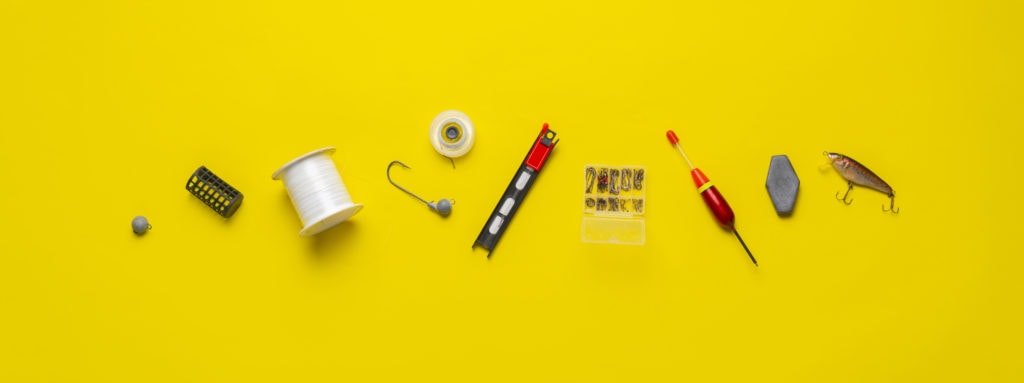
Be sure to know what and where you are fishing to get the right supplies. You can also talk to locals in the area where you will fish to find out where and what time of day the best fishing will happen. We hope you found what you were looking for in our article. Happy fishing.
